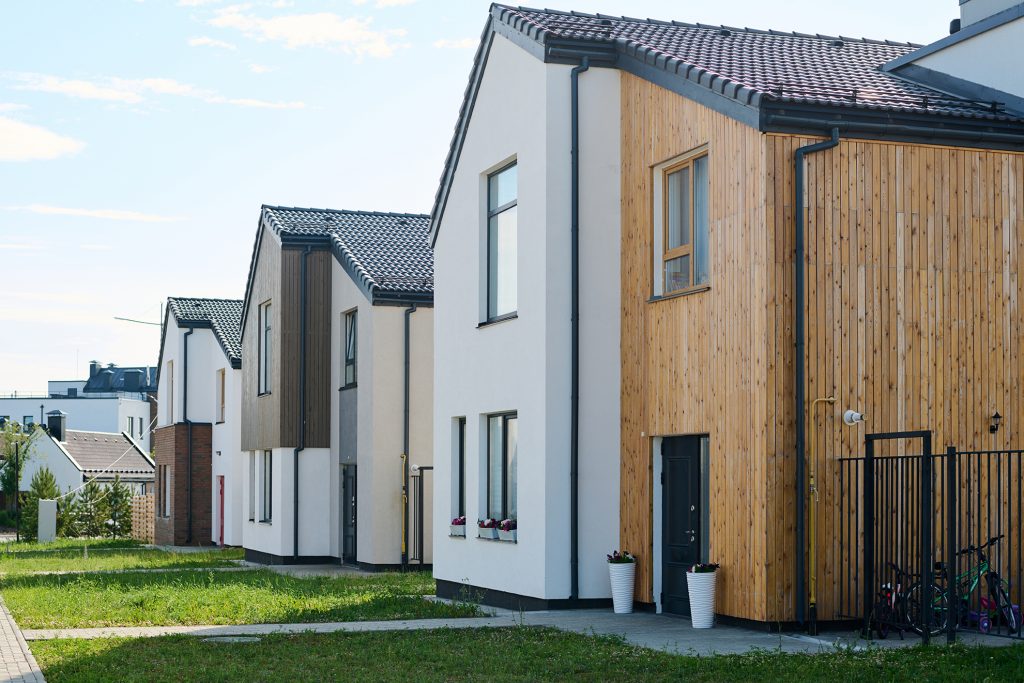Next Generation Glazing For New Builds
When faced with the environmental challenges of today, we need to build a future for tomorrow.
Building with this in mind comes not only with many challenges, but also ever-growing opportunities to engage with leading technologies that can bridge the gap between home design, home comfort, and sustainable practices.
Vacuum glazing is becoming a game changer in this area by exceeding current building requirements, whilst providing a product that is guaranteed to be as efficient in 15 years as it is the day it is installed, with a life expectancy of over 25 Years!!
Long Term Solutions Today
Instead of looking at short term, quick fixes, PassivGlas™ will assist in future proofing any home.
New build developments are constructed to comply with strict building regulations, and the use of current technology is also a consideration when future proofing developments. Vacuum glazing is an ideal product for new builds, due to it exceeding the requirements of the current building regulations. PassivGlas™ will continue to comply in future years due to its excellent thermal efficiency. ‘it’s like future proofing your future’.

Insulated Glass With Style
Unlike other forms of insulated glazing, such as double and triple glazing, vacuum insulated glazing is thinner (from 6.15 mm) with improved performance, and therefore, for an architect, PassivGlas™ units can be utilised in a variety of design options fitting seamlessly into either bespoke, or standard framing, to deliver the form and function of the design aesthetics.
PassivGlas™ units feature translucent micro-pillars as an integral part of the unit to allow the vacuum formation. The vacuum is key to the thermal (U value – 0.49 W/m2K), and acoustic performances of the VIG. With exceptional sound reduction qualities (Rw:36 dB), this makes it ideal for new build construction located in busy cities and commercial districts.
Window Installation Made Easy
The concept of the PassivGlas™ unit design being unusually thin, allows our glass to be fitted within timber frames, without the need for unsightly spacer bars. As such, architects don’t have to sacrifice any design aesthetic to allow for the installation of sustainable vacuum glazing products.
PassivGlas™ Ultimate Vacuum Glazing is the advanced solution for glazing standard frame sizes e.g. 20mm ,24mm etc.
To do this, the PassivGlas™ single VIG is added to an air filled, thermally broken spacer and another glass lite, to make our ‘hybrid’ unit. PassivGlas™ Ultimate fits easily into standard frames and mullions.
Key Points
Various glass configurations available to comply with building regulations: Part E, Part L and Part O & Future Homes requirements.
- Superior thermal insulation: Ug-Value from 0.49 W/m2K
- UKAS tested sound reduction of Rw :36 dB
- Slimline: from 6.15 mm thick
- 15-year warranty on Single VIG
- High Light transmission of up to 80%
Frequently Asked Questions
What are vacuum units?
Vacuum Insulated Glazing or VIG is an advanced fenestration type of insulating unit. It consists of two glass panes, like a standard Insulating unit, but rather than the spacer bar and an air gap, VIG’s are separated by a micro vacuum gap, with a glass solder edge seal.
Are they fully tested?
Yes, they are tested to recognised industry standards:
Impact resistance: EN 12150-2 & ANSI Z97.1-37 & EN 12600 & BS356 (recently completed)
Weathering: EN1279-5 & ASTM E546/E2188/E2189
U-Value: ISO8301/EN12667 (Recently UKAS tested) & ASTM C518
Soundproof: ISO 10140-2 (Recently UKAS tested)
Do the standard units use coated glass?
Yes, all PassivGlas™ Linear units incorporate a Low-e single silver toughenable coating.
In order to meet the current Part O regulations, a Low-e double silver coating would be needed to meet the 70/40 requirements. Please check with VGN as to availability and MOQ for this product range.
What is the expected life?
Expected life on the unit is 25+ years due to there being no spacer bar to fail.
Will there be any condensation
Condensation is formed when the air temperature surrounding an object falls below the dew point and changes into a liquid
Internal:
Although condensation will not form on the internal surface of a VIG unit, Vacuum Glazing does not eradicate condensation from the room.
The warmer inner glass will potentially change the rooms cold point.
It is advisable to ensure all rooms have effective ventilation/circulation.
External:
Condensation may form on the external glass surface under certain conditions.
Generally, forms a grid around the micro-pillars.
Will disappear when the outside temperature warms with the morning sun.
It is an indication of how efficiently your windows are at reducing thermal loss.
Condensation between glasses:
An indication that the Vacuum has been lost.
Consult your supplier to confirm course of action.

